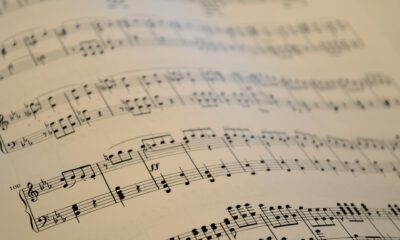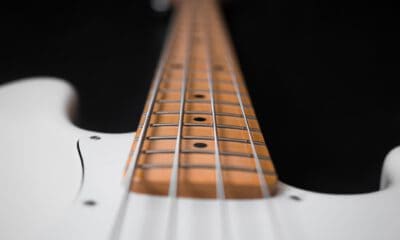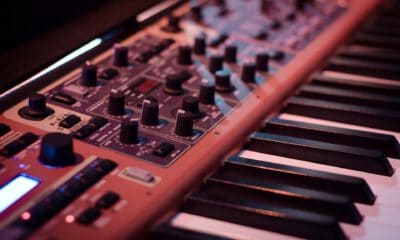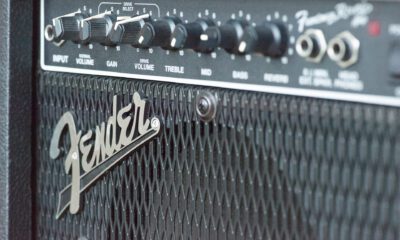Music Production
Can Piano Sheet Music Be Used For Other Instruments?

Piano sheet music and scores are available for almost every piece of music that exists.
Whether classical, modern, pop, rock, romantic… everywhere there is sheet music for the piano. However, the question arises whether these notes can also be used for other instruments besides the piano.
Can I use piano sheet music for other instruments?
You can use piano sheet music for other instruments as well. Higher instruments can use the treble clef, and lower instruments can use the bass clef and play the respective part. However, for a few instruments (for example, trumpets, clarinets, violas) the notes must be transposed.
Of course, this is just the short answer.
If you want to learn more about how exactly you can use piano sheet music for your instrument, what you should keep in mind, and how (if necessary) you can transpose your instrument quickly and easily, you’ve come to the right place.
How is piano sheet music written?
Generally, piano sheet music is written in 2 lines.
This is relatively unique, since the piano is one of the few instruments on which you can play so many notes at once.
Generally, the top line is usually notated in treble clef and the bottom line in bass clef.
In most easier pieces, the right hand (treble clef) plays the melody, and the left hand (bass clef) plays the accompaniment, for example in the form of chords.
Important: If you want to play a lower instrument from the bass part of the piano, you may play only parts of chords.
So you should play the right hand (upper line) from the piano score if possible, if your instrument allows it.
If you want to learn more about piano notation, you can watch this video:
How can I use piano notation for other instruments?
First, of course, you need to see what range your instrument is in:
If you play higher, you can easily use the right hand and the upper line of the sheet music as a guide.
If you play lower, you can basically orientate yourself to the bass notes in the left hand, but this means that you very often only play the chords and the accompaniment.
Therefore you have to think about what exactly you want to play. For example, if you are playing a bass part in a band or orchestra, you can easily use the left hand of the piano as a guide.
However, if you’re playing alone, you’ll probably want to play the melody first and foremost.
For that, it’s important to first identify which of your hands is playing the melody at all (99% of the time, it’s the right hand).
As I said, if you play a high instrument, you won’t have any problems at all simply orienting yourself to the melody in the right hand (upper line).
If you play a lower instrument, you can either just transfer the notes to bass clef like that, or, to stay in the correct key, just write the notes in treble clef “one line lower” and then put a bass clef in front of it.
Example:
The “E” is in treble clef where the “G” is in bass clef.
The “C” is in the treble clef where the “E” is in the bass clef.
The “A” is in the treble clef where the “C” is in the bass clef.
This way you can quickly change your notes from treble clef to bass clef. But for which instruments is this necessary at all?
Which instruments play in the left hand range of the piano?
- Bass guitar
- Trombone
- Tuba
- Bass saxophone
- Cello
- Bass clarinet
- Double bass
As you can see, it is mainly the bass instruments that also play in the range of the piano’s bass notes.
When do I have to transpose the piano notes?
Not all instruments have the same fundamental. The piano is notated the same, as for example violin, cello, double bass (strings), trombone, tuba, flute (winds), guitars, basses and many others.
Likewise, however, there are a number of instruments for which you will need to transpose the piano notes.
Examples are some trumpets, clarinets, violas (C clef), saxophones and many other instruments.
However, how many semitones your personal instrument needs to be transposed by depends on the specific construction.
For example, there are types of trumpets that do not need to be transposed and trumpets that do.
To see if and how you have to transpose your instrument, you should search for your instrument (make + model) on the Internet.

Can I play from piano sheet music together with others?
As I mentioned briefly, you can use piano scores to play with others.
This is especially fun if you play in a lineup that includes both bass and melody instruments.
Examples of good ensembles and bands:
In classical music, for example, a typical string quartet is suitable: 2 violins, a viola, and 1 cello. The violins can play the melody, and the viola and cello together play the left hand, accompaniment.
For rock bands, for example, an interplay of 2 guitars (lead and rhythm) and a bass is suitable. Here, for example, the lead guitar can play the right hand (melody) and the rhythm guitar, together with the bass, the accompaniment.
For brass players, for example, an ensemble of trumpets, trombones and a tuba is suitable: the trumpets can play the melody, while the trombones play the accompaniment and the tuba low notes.
Especially if you’re playing with a band or another ensemble, it’s important to transpose the notes the same everywhere.
Otherwise it won’t sound good because you will play a lot of unwanted disharmonies.
Summary and conclusion
In this article we have looked at whether, and how accurately, you can play piano notes with other instruments.
To summarize it again, here is the short guide:
1: Basically, it is possible to use piano sheet music with other instruments.
2: First you have to check if your instrument is written in bass clef or in treble clef.
3: Then you have to look (if your instrument plays in bass clef) which hand plays the melody on the piano (99% the right one).
4: Now you should make sure that you play only this voice (if you want to play the melody, of course).
Now you are done and you can use the piano sheet music for yourself!

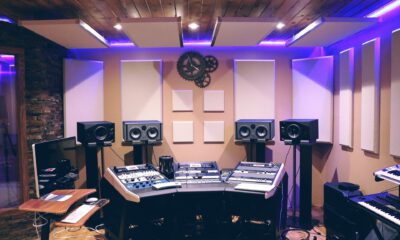
 Home Recording2 years ago
Home Recording2 years agoCan You Use Normal Speakers As Studio Monitors? The Simple Answer
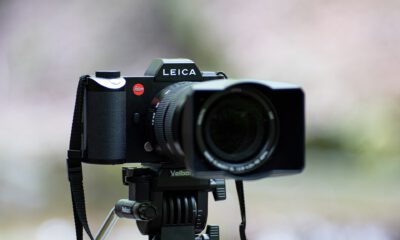
 Photography2 years ago
Photography2 years agoIs A Leica Worth It? (What you should know)
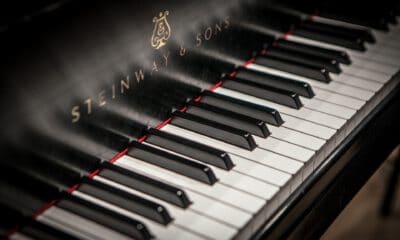
 Music Production2 years ago
Music Production2 years agoAre My Piano Keys Made Of Ivory? (How To Recognize It)

 Beginner2 years ago
Beginner2 years ago13 Valuable Analog Photography Tips For Beginners





